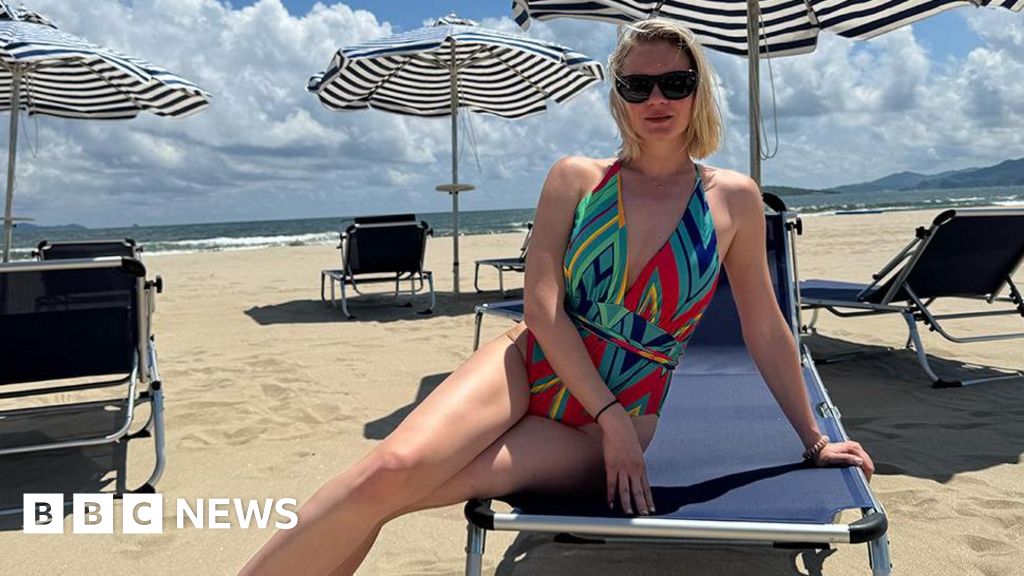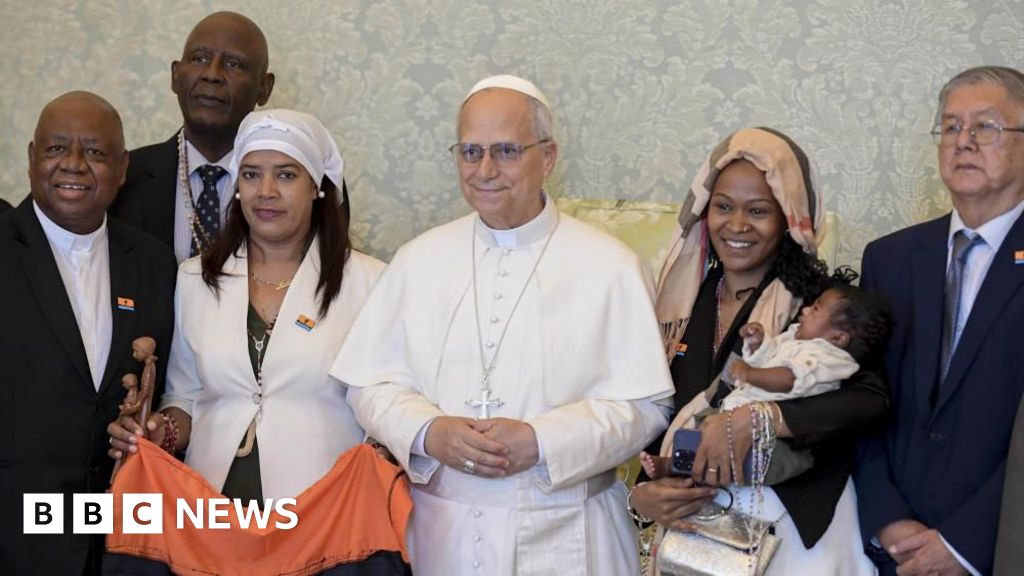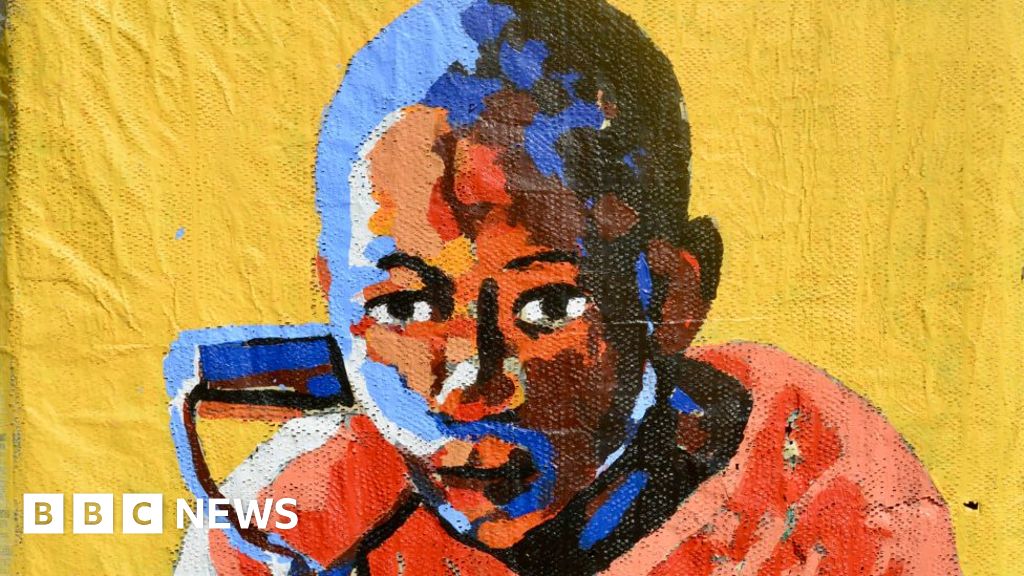President Donald Trump told President Volodymyr Zelensky of Ukraine on Monday that the United States would join Europe in providing security guarantees to Kyiv as part of a broader peace deal with Russia, the clearest signal yet that the White House is prepared to underwrite Ukraine’s long-term defense while pressing for negotiations with Moscow.
The statement of support from Trump came during a hastily arranged and unusual White House meeting attended by Zelensky and the leaders of Britain, France, Germany, Italy, Finland, the European Union and NATO, as European officials worked to shore up U.S. support for Ukraine they feared was teetering.
“When it comes to security, there’s going to be a lot of help,” Trump said as he sat beside Zelensky in the Oval Office, noting that Europe would be involved. “They are a first line of defense because they’re there, but we’ll help them out. I think very good things are going to come of it.”
The meeting came just three days after Trump hosted President Vladimir Putin of Russia in Alaska, a summit that alarmed European leaders as they watched the U.S. achieve little diplomatically while rolling out a red-carpet reception for a leader under indictment by the International Criminal Court for war crimes. Trump has since said repeatedly that Putin “wants to find an answer,” and has urged Ukraine to accept concessions that could include ceding land seized by Russia.
“If everything works out today, we’ll have a tri-lat,” Trump said on Monday, using shorthand for a three-way meeting with Putin and Zelensky. “Ultimately, this is a decision that can only be made by President Zelensky and by the people of Ukraine, working also in agreement with President Putin.”
Trump’s reassuring tone to Zelensky marked a striking shift from the two leaders’ last Oval Office encounter in February, when Trump and Vice President J.D. Vance abruptly cut off discussions and chastised the Ukrainian leader for failing to show sufficient gratitude for American military aid. On Monday, by contrast, Trump greeted Zelensky warmly outside the West Wing, admiring his formal black suit—a shift from the olive green T-shirt uniform he's worn since the war began—and putting a hand on his back before leading him inside.
Zelensky, who presented a letter from his wife to First Lady Melania Trump during the session, described their one-on-one conversation as “very good” and said the U.S. signal on security guarantees was critical.
“This is very important, that the United States gives such a strong signal and is ready for security guarantees,” Zelensky said. “We spoke about very sensitive points.”
After the bilateral session, Trump and Zelensky were joined by German Chancellor Friedrich Merz, French President Emmanuel Macron, British Prime Minister Keir Starmer, Italian Prime Minister Giorgia Meloni, Finnish President Alexander Stubb, European Commission President Ursula von der Leyen, and Secretary-General of NATO Mark Rutte for more extensive talks.
The group of European leaders were notably excluded last week from Trump’s summit with Putin—prompting several of them to quickly arrange to visit the White House at the last minute to present to Trump a united front against Russia.
Rutte, NATO’s Secretary-General, hailed Trump’s willingness to consider “Article 5-like” protections for Ukraine as a breakthrough in ending the war. Such protections for Ukraine would be similar to what is granted to NATO countries, whereby an attack on one member nation is considered an attack on all, even though Ukraine is not a member of NATO. “The fact that you have said ‘I am willing to participate in the security guarantees’ is a big step, it’s really a breakthrough, and it makes all the difference,” Rutte said.
But several leaders also pushed back on Trump’s latest position that a ceasefire was no longer needed or a prerequisite for negotiating peace with Russia—a stance that mirrors Putin’s preference. “I can’t imagine that the next meeting would take place without a ceasefire,” Merz, of Germany said to Trump and other European leaders. “So let’s work on that and let’s try to put pressure on Russia.”
Macron also suggested that any lasting arrangement would require broader European participation. “I think as a follow-up, we would need probably a quadrilateral meeting,” he said, hinting that a European leader should join a potential Trump-Putin-Zelensky summit.
Trump said he planned to phone the Russian leader after his meetings with Zelensky and European leaders, and would raise the trilateral proposal directly. “He’s expecting my call when we’re finished with this meeting,” Trump said.
On a hot mic ahead of the multilateral meeting, Trump was heard saying of Putin: “I think he wants to make a deal for me. Do you understand? As crazy as it sounds.”
Despite the optimistic statements made Monday, the prospects of ending Russia’s invasion in Ukraine remain just as blurry as they did in the aftermath of Friday’s Trump-Putin in Alaska. It’s unclear if Ukraine will agree to concessions floated by Trump and Putin, or if Trump’s vague U.S. security guarantees are enough to convince Ukraine to acquiesce to demands made by Russia. Trump has made clear that he expects Ukraine to forego ambitions of joining NATO and to accept that Crimea, annexed by Russia in 2014, will not be returned. He has also spoken of “possible exchanges of territory” in the Donbas region, asserting that Zelensky could end the war "almost immediately" by agreeing to these terms, framing Ukraine as having the primary responsibility to resolve the conflict initiated by Russia’s 2022 invasion.
The Ukrainian leader has repeatedly rejected calls to cede land, calling it a recipe for future attacks.
The Trump Administration has said that Putin has indicated a willingness to accept U.S. security guarantees for Ukraine, though Russia issued a statement on Monday rejecting the deployment of NATO troops in Ukraine as part of any security guarantees, raising further questions about what Trump and Putin discussed during the Alaska summit.
Just hours before Zelensky’s meeting with Trump, Russian strikes on the cities of Kharkiv and Zaporizhzhia killed at least 10 people, including a child, and injured dozens of others, according to Ukrainian authorities. Zelensky has called the timing of the strikes an attempt by Putin to put pressure on Ukraine to accept its terms.
In a striking departure from his past rhetoric, Trump on Monday did not immediately rule out sending American troops to Ukraine to help enforce peace—a potential shift for a President who has long campaigned on promises to keep U.S. troops out of foreign wars. Despite his sometimes skeptical tone about Ukraine’s war effort, he insisted American support was not about to end. “I can never say that. It’s never the end of the road,” he said when asked by a reporter if today’s meeting amounted to a “deal or no deal” moment for U.S. assistance. “People are being killed and we want to stop that. So, I would not say it’s the end of the road.”
This is a breaking news story and will be updated.











 English (US) ·
English (US) ·